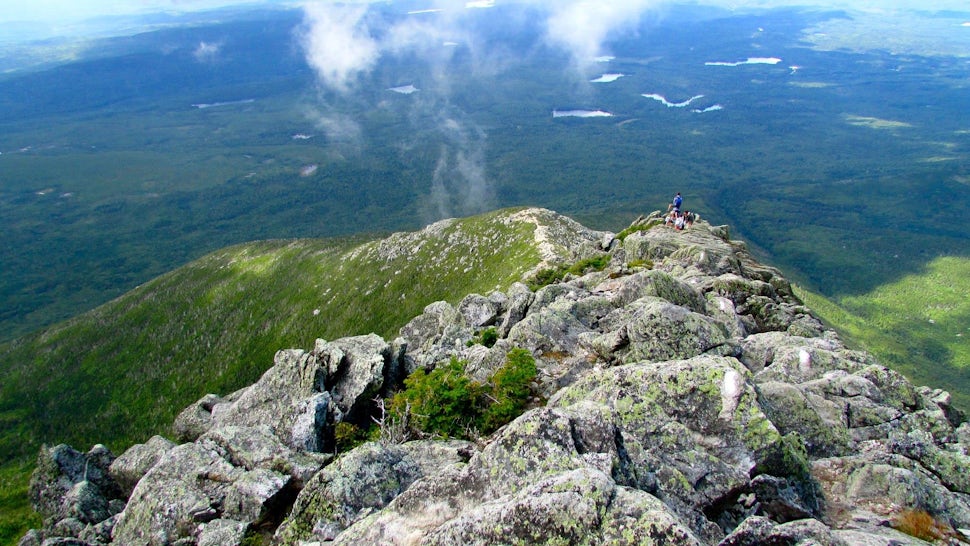The Debate about a New National Monument in Maine’s Northern Woods
What is the good, the bad, and the ugly of designating a new national monument in Northern Maine?

On August 24, 2016 President Obama designated 87,500 acres of Maine’s northern Woods as the Katahdin Woods and Waters National Monument. Before it was officially christened, and now after, there was some debate surrounding whether or not calling national attention to the area would have a positive or negative effect on Maine’s commerce, its residents and the areas surrounding the new monument.
The United States has 123 national monuments and 58 national parks that have been created and maintained in the last century. The overall success of the parks leads to the idea that protecting land and developing it to be more readily available to the public is a positive thing, and in many cases this stands to be true. So what kind of positive changes will the Katahdin Woods and Waters National Monument (that is a serious mouth full) make?
Of course, residents of Maine and especially those living in the Millinocket area can expect a great increase in jobs. A national monument means that there will need to be more places to stay, places to eat, and places to relax or buy gifts. Anyone that has ever been to that area up in Northern Maine knows that it is pretty scant of those things now and the majority of tourists visiting national parks have a penchant for loading up their cars with souvenirs and eating themselves silly while making occasional stops at well known places to fill their cameras with pictures. Along with that, there will be job openings within the park for rangers and maintenance.
With two national lands within 3 hours of each other, the entire distance between Acadia and Katahdin will be strewn with new commercial landmarks, finally making Northern Maine a tourist destination. Maybe Maine will build a better reputation beyond the racist governor and the moose?
There is no denying that creating a national monument in the Northern Woods will create a seal of protection over the area, which will save the woods from forestry or big companies like Poland Spring buying up the water (something that is already a problem in Maine). 87,500 acres is a pretty big chunk of land and it definitely makes my heart happy to know that in 100 years, the area will still be preserved. But now it’s important to consider what some of the negative aspects of designating the national monument would be.
Several Maine residents are concerned about some of those “positives” being negatives. Along with all those jobs come a lot of construction and a lot of changes to the small towns that surround the monument. Millinocket (the largest town near Katahdin) only has a population of 4,506. I would imagine that the people, who grew up in that kind of environment and decided to stay into their adult lives, were not expecting a massive influx of people to the area. Some residents say they don’t even know what the attraction of the Maine woods is, but this is coming from people who grew up surrounded by Maine’s pristine beauty. There is definitely some fear of the unknown. Houses that once were set back in the woods could suddenly be surrounded by gas stations or gift shops. It is all a question of how much the federal government heading the operation is going to develop the area. At this point, it is impossible to know what kind of attraction the national monument will even have.
Another concern about that type of development in a place that has remained untouched for so long is wildlife management. How will this affect them? How will having so much more traffic through the area affect them? Hopefully, there will be ways to control it, but there is no denying that some animals will be displaced, and no one wants black bears roaming outside of grocery stores because their home was disrupted.
Additionally, all National lands face foreign invaders. Plants, bugs and soil coming from other places can completely change the environmental landscape in Northern Maine. Parks demand that boats are washed clean before they are put in to the water, but there is no fool proof way for controlling this type of thing.
As someone who grew up in Maine, exploring the northern woods and paddling through the rivers that cut them, I am still coming to a decision on how I feel about the national monument. It is hard to form an opinion without seeing how much development takes place and how much the area changes because of it. Maine residents voted against the Monument, but because Roxanne Quimby (founder of Burt’s Bees) has control over the land, this vote was side stepped. I love the National Park System, and I only hope that this change means a lot of great things for the beautiful state of Maine in the future.
We want to acknowledge and thank the past, present, and future generations of all Native Nations and Indigenous Peoples whose ancestral lands we travel, explore, and play on. Always practice Leave No Trace ethics on your adventures and follow local regulations. Please explore responsibly!
Do you love the outdoors?
Yep, us too. That's why we send you the best local adventures, stories, and expert advice, right to your inbox.










